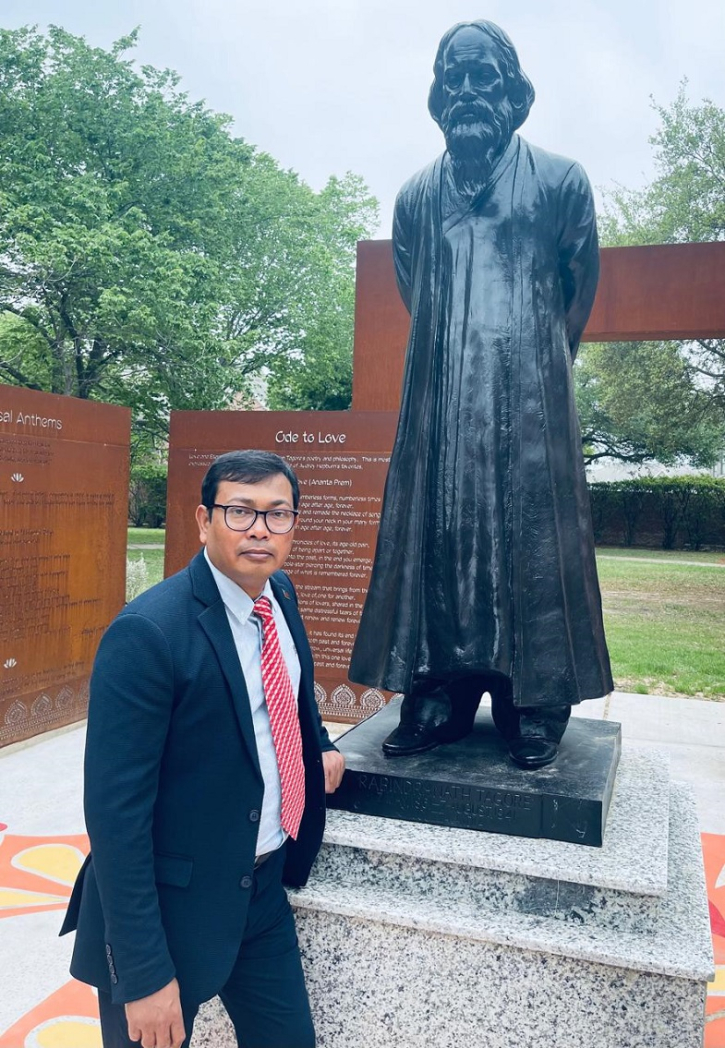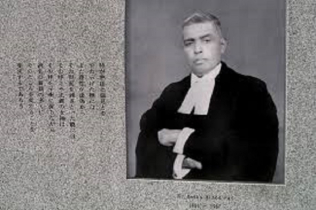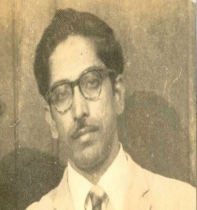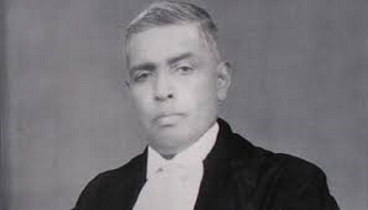
Rabindranath Tagore in Texas
By Akhil Podder Ph.D.
At the time, American art and literature had not yet become so deeply rooted in economics. When celebrated poets or literary figures visited the country, they were warmly received. Dialogues centered on aesthetics—on the beauty of life and art. Lectures often reflected themes of peace within a global context, along with contemporary issues. Intellectual salons, social gatherings, and university clubs buzzed with excitement around poets and theorists. Speakers were honored, and the press gave such events generous coverage.
Yet, Rabindranath Tagore—a Nobel Laureate—was met with disrespect and ridicule.
This was during the poet’s third trip to the United States, from October 1920 to February 1921. Upon arriving at Hotel Algonquin in New York on October 29, Tagore experienced a bitter reception filled with indifference, scorn, and emotional unease. It was this mistreatment that led him to leave New York and seek refuge in Texas, where finally—he found some measure of peace.
By February 12, 1921, Tagore’s perception of America had changed dramatically from his earlier visits. After winning the Nobel Prize in 1913, his second visit to the U.S. saw him deliver lectures in 25 cities. Each event paid between $700 and $1,000—a testament to the overwhelming admiration Americans had shown him at the time. From Alaska to Boston, Los Angeles to New Jersey, there was a "Tagore frenzy." He had told New York journalists, “America is in its youth. Here, Western civilization and humanity will flourish.” His tour was so successful that he had hoped to raise significant funds for Santiniketan, his educational project in India.
But in 1920, those hopes were dashed.
The admiration he had once known had faded. He was pained more deeply than he had anticipated. Even appeals for help to American industrial tycoons—like the house of J.P. Morgan—proved fruitless. From the first week of January through the 10th, he accepted invitations from literary societies in and around New York. He read essays like “Education in India,” but his talks failed to move wealthy New Yorkers, especially the elite women, whose discourteous behavior shocked him. To Tagore, America now seemed a strange and alien land. He even expressed his disillusionment at a farewell dinner hosted by the Poetry Society, candidly revealing the bitterness he had accumulated during his stay.
He recounted bizarre rumors that had labeled him a German agent and openly criticized the hostile behaviors he encountered. This speech was not well received by many in the audience.
America's cold reception was in stark contrast to his previous visits. By 1920, the "Tagore fever" had waned. Global politics had shifted. The U.S. was now a close ally of Britain, and many Americans were displeased with Tagore for rejecting the knighthood the British had awarded him. Most events organized in his honor during this third trip felt disjointed, lifeless, or merely obligatory. Unlike earlier visits, there was no enthusiastic scramble among the intelligentsia to host him.
He had to check into a hotel—something unthinkable during his previous tours. The disinterest weighed heavily on him. But in that haze of disappointment, his journey to Texas brought a glimmer of hope. The cities of Dallas and Houston became places of solace and quiet renewal.
At that time, America was in the grip of the Great Depression. Minnesota’s Minneapolis Tribune mocked Tagore, writing: “Never before has a bigger Indian businessman visited this area.” Such sentiments dampened his ambitious fundraising efforts for Visva-Bharati University. Several newspapers criticized his outspoken opposition to British imperialism and American war policies.
He did not passively accept American culture’s ungraciousness. Tagore confided in his close friend Charles Freer Andrews about these experiences. In a letter dated January 1, 1921, he wrote:
“It is the New Year today. But I do not feel its presence in the air, for it has brought no message for me. These countries celebrate the New Year with hopes of political harmony and economic change. But the New Year we know at Santiniketan seeks the unfolding of the soul by cleansing the inner self. Last night, the entire city was in a frenzy of celebration. This morning, they are so exhausted they cannot even open their hearts to the beauty of the sun. My heart aches with the thought that, had I been in Santiniketan, the morning sun would have greeted me with its blessing…”
Among his American friends, one stood out—Dr. Richard Theodore Ely, professor at the University of Wisconsin. Ely was a renowned economist, writer, and leader of the Progressive Movement, known for his opposition to the injustices of capitalism. In December 1920, he and a few others arranged a quiet Christmas retreat for Tagore at the Yama Farms Inn near the Catskills, outside New York. On December 25, Tagore wrote to C.F. Andrews:
“It is Christmas today. About fifty people from various parts of the U.S. have gathered here. On this holy day, thoughts of Christ are only natural. But where is Christ's message in people’s hearts? Men and women are busy overeating, laughing loudly, indulging in excess. Where in all this merriment is the touch of the eternal—where is the sign of devotion?”
On February 9, Tagore left with Pearson for Texas. They arrived in Dallas on February 12. The natural beauty of “The Lone Star State” captivated him. The weight of prior indignities began to lift. He received invitations to speak in nearby towns, and twice he delivered lectures at a local Unitarian church, emphasizing the importance of an international university.
But what touched him most was an event at a women’s college on February 21, 1921. After he recited several poems, the students surrounded him, full of admiration. They bombarded him with questions. Immersed in youthful energy, Tagore felt genuinely delighted and responded to every query with grace and humor.
Tagore Groves: A Cultural Oasis in Houston's Energy Corridor
In recent years, Houston's Energy Corridor has gained global recognition, not just for its economic and technological significance, but also for its cultural contributions. A shining example of this is the installation of a statue of Rabindranath Tagore at the nearby Ray Miller Park. Since its unveiling, the area has come to be affectionately known as Tagore Groves—a spiritual and cultural grove dedicated to the Nobel laureate poet and philosopher.
More than just a memorial, Tagore Groves has evolved into a vibrant venue for multi-dimensional artistic and literary events throughout the year. From music concerts and poetry recitals to seminars and cultural festivals, the grove remains active well beyond Tagore’s birth or death anniversaries.
Since February 2021, Ray Miller Park in Houston has become a global point of interest. Located in the city that houses NASA, the park hosts a variety of cultural activities that reflect the deep values of art, literature, and intercontinental unity. These events are championed by the Tagore Society of Houston, an organization committed not only to organizing public celebrations but also to conducting research on Tagore’s global legacy and philosophical depth.
A landmark moment came in 2013, when a full-height bronze statue of Rabindranath Tagore was installed at the Tagore Grove Memorial—making it the first of its kind in the United States. Outside of India, there are only five such statues worldwide, marking the importance of this monument in the global Tagorean landscape.
With its spiritual ambience and educational significance rooted in ancient traditions, Ray Miller Park stands as a modern-day sanctuary of universal consciousness. For Bengali-Americans and the wider South Asian diaspora, Tagore Groves is a cherished and honored space that bridges the past with the present, the East with the West.
Akhil Podder Ph.D., Investigative Journalist | Media Leader | Literary Scholar
[Dr. Akhil Podder is a pioneering figure in Bangladeshi investigative journalism. He served as the Chief News Editor and Chief Correspondent of Ekushey Television, the country’s first private television network. Earlier in his career, he contributed significantly to two of Bangladesh's most respected newspapers, establishing a strong foundation in journalistic excellence from his university days. He has received numerous national and international awards for his impactful and bold reporting on critical socio-political issues. Academically, Dr. Podder holds both a bachelor’s and master’s degree in Bengali Literature, ranking first in the second class in both. He earned his Ph.D. with a research focus on the dramatic dimensions of Buddhadeva Bose’s literary work, bridging media practice with deep literary scholarship. Dr. Podder’s career represents a rare synthesis of intellectual rigor and fearless journalism—making him a respected voice in both the media and academic spheres of South Asia.]








